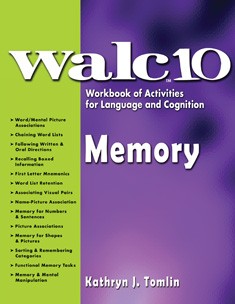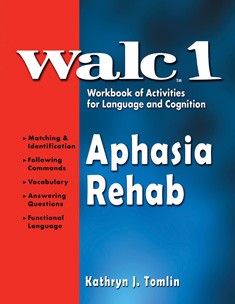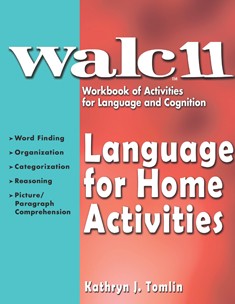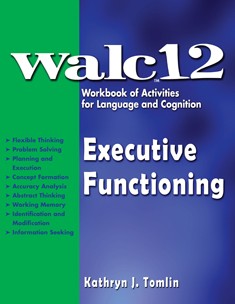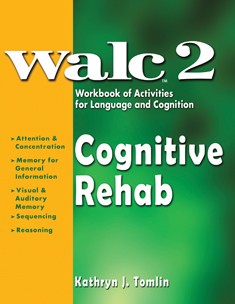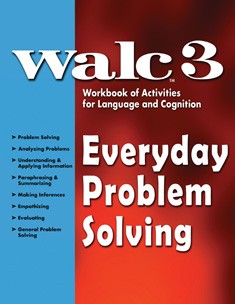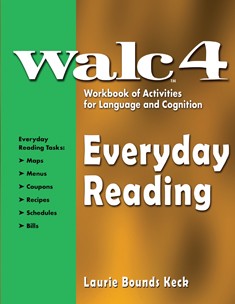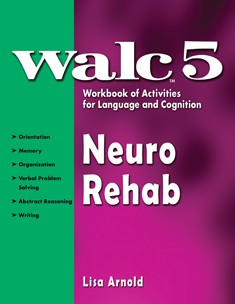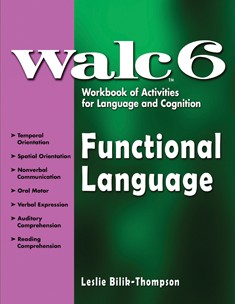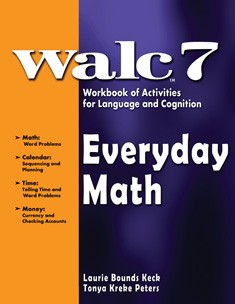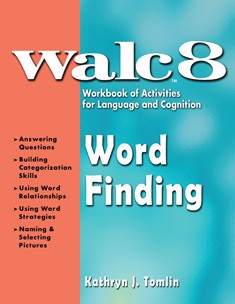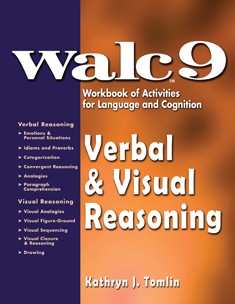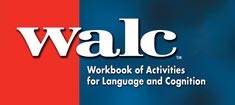- Ages 16 - Adult
- Grades 11 - Adult
- Pages 186
- Format 8.5" x 11"
-
Product Code 31636 ( MR #065526 )
Price $54.00
WALC 10 Memory begins with a series of activities to determine the client's dominant coding system (visual, auditory, and kinesthetic). Clients recognize memory strategies they already use and the value of learning new ones. The rest of the book focuses on learning and practicing memory strategies. The lessons are organized by these memory strategies:
Word/Mental Picture Associations
Recall information using associations such as part/whole, category, action/agent (e.g., wrapping/present), attributes, and location.
Chaining Word Lists
Create chains of word associations and recall lists of information.
Following Written and Oral Directions
Follow two- and three-step directions. Make mental images of what the directions request and then carry them out.
Recalling Boxed Information
Clients study the placement of shapes, numbers, and words in boxes and code it for later recall.
First Letter Mnemonics
Take the first letter of each word in a list of words and create a new word from those letters.
Word List Retention
Clients develop mental flexibility as they practice memory strategies with the added factors of inclusion (e.g., Which words were first and last in the list?) and exclusion (e.g., Which ones are not soft?).
Associated Visual Pairs
Associate two visual items and then recall one of the items using a memory/coding strategy.
Name-Picture Association
Clients practice coding people's names to their faces.
Memory for Numbers and Sentences
Learn strategies for recalling number sequences and lengthy sentences.
Picture Associations
Develop associations between objects, between people and objects, and between people and places.
Memory for Shapes and Pictures
Clients use various memory strategies to name, duplicate, and answer questions about shapes and pictures.
Sorting and Remembering Categories
Code and recall words and pictured items by creating categories for them.
Functional Memory Tasks
Read or listen to messages, directions, paragraphs, and informative articles and recall pertinent information.
Memory and Mental Manipulation
Clients remember words and repeat them back in a variety of ways including backwards, alphabetically, in order of size, etc.
Workbook of Activities for Language and Cognition (WALC) <show description>
- Copyright 2007

 Proud to be Canadian
Proud to be Canadian